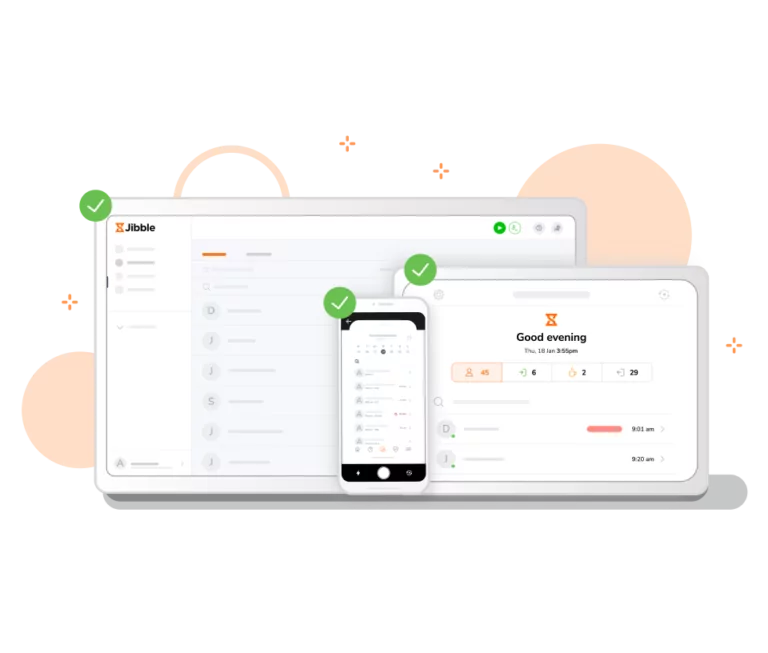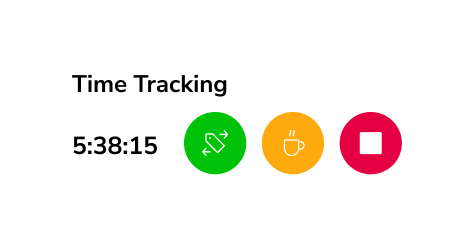
Image by 정훈 김 from Pixabay
Background
A well-established educational institution in the US, recognized for its experiential learning, impactful research, global reach, and strong partnerships.
The establishment includes a global network and over 10 campuses and 50 alumni communities, fostering innovation through collaboration across industries, with over 3,000 employer partners.
For confidentiality reasons, the institution name is not disclosed.
Challenges with the Old System That Made the Institution Change
The university’s employees, including faculty, administrative staff, researchers, and students, function across various departments, locations, and schedules, which required a flexible and efficient solution for accurate time tracking, payroll, and compliance. Below are the key challenges that led to the decision to implement a more advanced time tracking system:
1# Inaccurate Tracking of Faculty and Administrative Staff Hours:
The university employs a mix of full-time, part-time, and adjunct faculty members, in addition to administrative and support staff. The old system struggled to accurately track varied working hours for faculty, who often work non-traditional hours. This resulted in discrepancies in pay, particularly for adjunct faculty with flexible schedules. A new system with automated time tracking, flexible scheduling features, and support for different work types would ensure accurate logging of work hours, improving payroll accuracy and reducing administrative challenges.
2# Inefficient Tracking for Student Workers and Interns:
As a major academic institution, the university hires a large number of student workers and interns, many of whom work part-time or on flexible schedules. The old system had difficulty managing these employees, especially when they worked across different departments or had inconsistent working hours. A modern time tracking system with part-time and student worker-specific features, time tracking for multiple roles, and location-based clock-ins would streamline the management of these employees and ensure accurate tracking of work hours across various departments.
3# Lack of Real-Time Analytics and Reporting:
The old system lacked comprehensive reporting and analytics tools, which made it difficult for the university’s HR and finance teams to analyze labor costs, track employee attendance patterns, or monitor project-based labor utilization. The lack of real-time insights also made it challenging to respond quickly to scheduling or compliance issues. A modern time tracking system with real-time dashboards, customizable reports, and analytics capabilities would enable the university to optimize staffing, reduce labor costs, and improve overall decision-making by providing actionable insights into workforce productivity and trends.
4# Lack of Integration with Other Campus Systems:
The university’s HR, payroll, and academic systems were not integrated with the old time tracking solution, resulting in time-consuming manual data entry and the potential for errors when transferring information between systems. A centralized solution with seamless integration with HR and payroll systems, as well as student and faculty management platforms, would streamline workflows, eliminate redundant data entry, and improve overall administrative efficiency.
The Institution’s Time Tracking Key Requirements
The institution had several critical requirements for a time tracking solution to address the complexities of its operations, ensuring seamless integration and operational efficiency. These key requirements included:
- Campus-Wide Time Tracking – Ability to track hours across multiple departments, from faculty to administrative staff.
- Mobile Access for Staff – Allow employees to clock in/out from mobile devices, especially for part-time workers.
- Integrated Scheduling – Seamlessly integrate class schedules with employee shift planning for optimal resource allocation.
- Leave Management – Simplified process for managing and approving time-off requests.
- Real-Time Analytics – Provide reports on attendance, payroll, and departmental labor costs for management.
Why the Institution Chose Jibble Time Tracking
When it came time to find a solution to track the staff’s time, Jibble stood out as the perfect fit. Here’s why the institution decided to integrate it into their workflow:
1# Mobile Time Tracking for a Diverse Workforce:
With a wide range of employees, from faculty to student workers, the university needed a flexible time tracking solution. Jibble’s mobile app allowed employees to easily clock in and out, whether working on campus or remotely, ensuring accurate time logging across different work settings.
2# Automated Reporting for Administrative Efficiency:
Jibble’s automated reporting feature helped the university reduce the manual effort needed to compile timesheets and generate reports. This streamlined the process for HR and administrative teams, saving time and allowing for faster decision-making.
3# Approvals and Real-Time Visibility for Managers:
The university’s administrators and managers needed a clear view of how time was being spent across departments. Jibble’s real-time tracking allowed them to easily monitor staff hours and adjust workloads or resources quickly. Further, requests and approvals for leave, working hours, and the customizability of access was well-suited for the various directorial setup within the institution.
How Was the Onboarding Process?
The university’s onboarding process for Jibble was highly structured and involved multiple departments to ensure smooth adoption across their diverse workforce. The HR team, along with IT, played a critical role in the integration. This can be seen in two phases:
Pilot Phase:
Initially, the university conducted a pilot phase with a smaller group of staff from various departments. This phase allowed the team to identify potential challenges and make adjustments to the system to meet their specific needs, such as tracking hours for student workers and faculty who often worked non-traditional hours.
Deployment and Integration Phase:
The full deployment took place over a 4-week period, with a phased roll-out across campus. The university provided training sessions to employees, focusing on the mobile app’s ease of use and the importance of accurate time tracking for payroll and reporting. The integration with their existing payroll and HR systems was seamless, thanks to Jibble’s flexible API, allowing data to flow effortlessly into their systems.
Bonus: While not mandatorily deployed by the university, Jibble was also offered to the student body of the institution to assist with compartmentalization of their study hours and for the instillment of better time management practices.
The Benefits Immediately Identified Post Onboarding
Following the onboarding process, the institution quickly experienced several key benefits that significantly contributed to its sustainable improvement, including:
1. Real-Time Tracking for Diverse Workforce: Jibble enabled the university to track the time of both faculty and student workers, ensuring accurate records for payroll and grants.
2. Seamless Integration with University Systems: Integration with existing HR systems made time tracking and payroll processing more efficient for the university.
3. Increased Efficiency with Payroll: Real-time time tracking helped ensure that work hours were accurately documented, and accurately compensated, reducing inconsistencies.
Main Method of Jibbling In and Out
The key methods for clocking in for the institution is through:
- Mobile App: With varying work schedules and locations, the staff use the Jibble mobile app to clock in on the go at any time, providing flexibility to track time remotely or on campus, ensuring real-time monitoring of work hours.
- Desktop App: The institution also utilizes Jibble’s desktop application for student workers, faculty, and administrative staff on fixed schedules.



